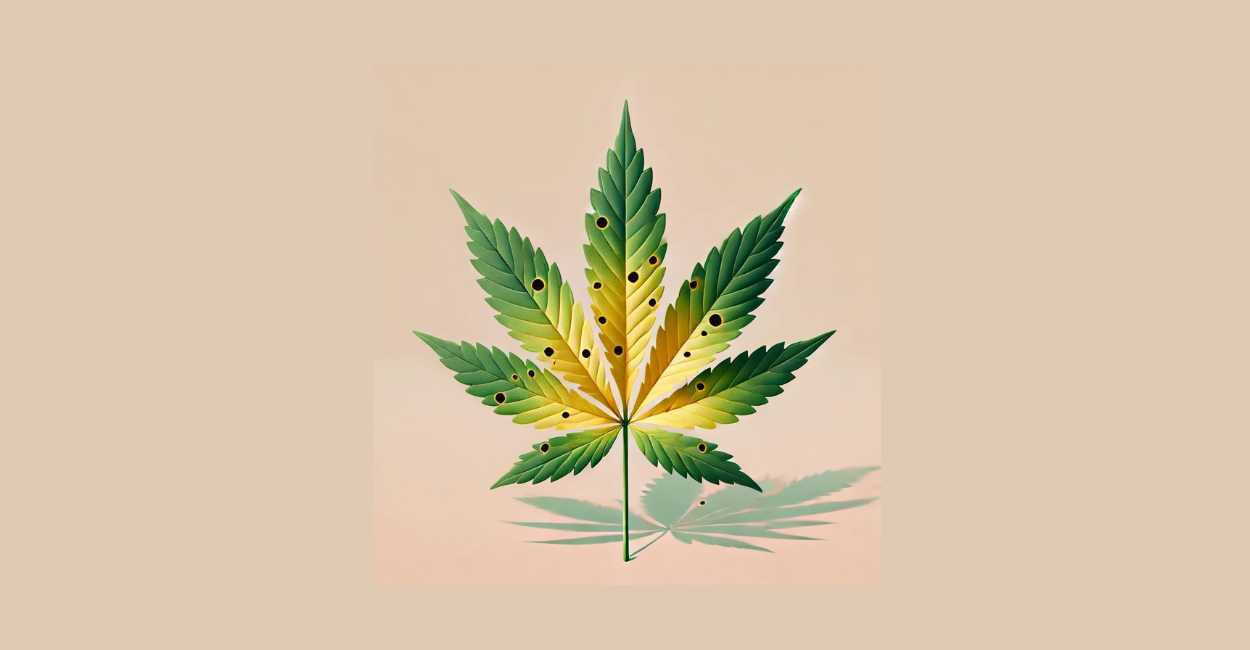Are your cannabis plants looking pale and growing slowly? This could be a molybdenum deficiency in cannabis plants. But don't worry, we're here to help! In this article, we'll explain how to identify the signs of molybdenum deficiency, understand the causes, and find solutions to restore your plants' health and strength. Let's crack the molybdenum code together and save your harvest!
Table of Contents
Role of Molybdenum
Molybdenum is an essential micronutrient crucial for nitrogen fixation and nutrient metabolism. It plays a central role in enzyme functions, especially in the reduction of nitrate to ammonium, a step vital for protein biosynthesis. Additionally, molybdenum supports the formation of chlorophyll necessary for photosynthesis. Without adequate molybdenum, cannabis plants cannot grow properly and are more susceptible to various deficiency symptoms.
Signs and Symptoms
A deficiency in molybdenum can cause various symptoms:
- Yellowing Leaves: Yellow leaves are a common sign of molybdenum deficiency, particularly between the veins (interveinal chlorosis), often starting with older leaves and spreading to younger leaves.
- Dark Brown Spots: These spots can indicate molybdenum deficiency and often appear on older leaves. These spots result from necrosis, the death of plant tissue.
- Leaf Curling: Curling of the leaves is another symptom of molybdenum deficiency. Leaves may curl upwards or downwards and develop a brittle texture.
- Stunted Growth: A lack of molybdenum can lead to stunted plant growth and poor flower development, resulting in smaller and less dense buds.
- Necrosis: Tissue death, which can manifest as brown or black spots, is often the final stage of a severe nutrient deficiency.
In our cultivation facilities, we have found that early detection of these symptoms is crucial to preventing further damage to the plants. Regular inspections and soil tests are therefore essential.
Causes of Molybdenum Deficiency
Several factors can lead to a molybdenum deficiency:
- pH Level: An overly high or low pH level can impede the uptake of this micronutrient. The optimal pH range for cannabis plants is between 6.0 and 7.0. Molybdenum is best absorbed under slightly alkaline conditions, so overly acidic soil can be problematic.
- Excess Iron: An excess of iron in the soil can reduce the availability of molybdenum. This is because iron and molybdenum compete for the same uptake pathways.
- Soil Compaction: Compacted soil can hinder nutrient uptake by the roots. Good soil drainage and aeration are important for promoting root health and nutrient absorption.
- Root Damage: Damaged roots due to physical impacts or disease can impair nutrient uptake. It is essential to protect roots from mechanical damage and pathogens.
By addressing these factors, growers can identify the causes of molybdenum deficiency and implement targeted corrective measures.
Treatment of Molybdenum Deficiency
To treat a molybdenum deficiency, consider the following measures:
- Foliar Spray: Applying a molybdenum-rich foliar spray can quickly remedy the deficiency. Foliar sprays allow for direct nutrient uptake through the leaves, acting faster than root absorption. Use a solution with a concentration of 0.05-0.1% molybdenum and thoroughly spray the leaves.
- pH Adjustment: Check and correct the pH level of your soil or growing medium to improve nutrient uptake. Use pH meters and kits to ensure the pH level is within the optimal range. The ideal pH for molybdenum uptake is between 6.0 and 7.5.
- Nutrient Metabolism: Use fertilizers specifically formulated to address molybdenum deficiency. These fertilizers often contain a balanced mix of micronutrients necessary for the plant. Follow the manufacturer's dosage instructions carefully to avoid overapplication.
Our preferred method for quickly addressing a molybdenum deficiency is applying molybdenum-containing foliar sprays and adjusting the pH levels. These methods have proven particularly effective in our cultivation facilities.
Prevention of Molybdenum Deficiency
Preventing nutrient deficiencies is the best approach for successful cannabis cultivation:
- Soil Testing: Regular testing of soil or growing medium helps detect nutrient deficiencies early. Soil tests provide insights into pH levels and nutrient availability.
- Organic Material: Adding compost or other organic materials can improve nutrient availability. Organic material enhances soil structure and promotes microbial activity crucial for nutrient uptake.
- Avoid Root Damage: Protect your plant's roots from physical damage and pathogens. Avoid excessive soil tilling and ensure good drainage.
Our experience shows that preventive measures such as regular soil testing and improving soil biology are essential to avoiding molybdenum deficiency.
Importance of Micronutrients
Micronutrients like molybdenum are essential for the growth and health of cannabis plants. They support photosynthesis, enzyme function, and nitrogen fixation, leading to better plant development and higher yields. In our cultivation facilities, we have found that a balanced nutrient supply is crucial for success. Without the right micronutrients, even well-cared-for plants can suffer from growth disorders and yield losses.
Important Note:
Ensuring an adequate supply of molybdenum for your cannabis plants is crucial for their health. If you observe symptoms of a deficiency, such as interveinal chlorosis or stunted growth, you should adjust your nutrient program. Adding molybdenum-rich nutrients or supplements can help correct the deficiency. Always check the pH levels of your soil or growing medium, as an incorrect pH can inhibit the uptake of this nutrient. For more information and suitable products to correct nutrient deficiencies, visit our product category for Fertilizer - molybdenum nutrients.
Conclusion:
Molybdenum is a crucial micronutrient for the health and growth of cannabis plants. Early detection of deficiencies and prompt treatment can prevent significant damage. Regular soil testing and pH adjustments, combined with a balanced nutrient program, will ensure your cannabis plants remain healthy and productive.
Disclaimer
This website's content is for informational use only and should not be considered medical or legal advice. Always consult a healthcare professional for health-related issues. Be aware of local regulations regarding cannabis cultivation. We are not liable for any actions taken based on this information.

